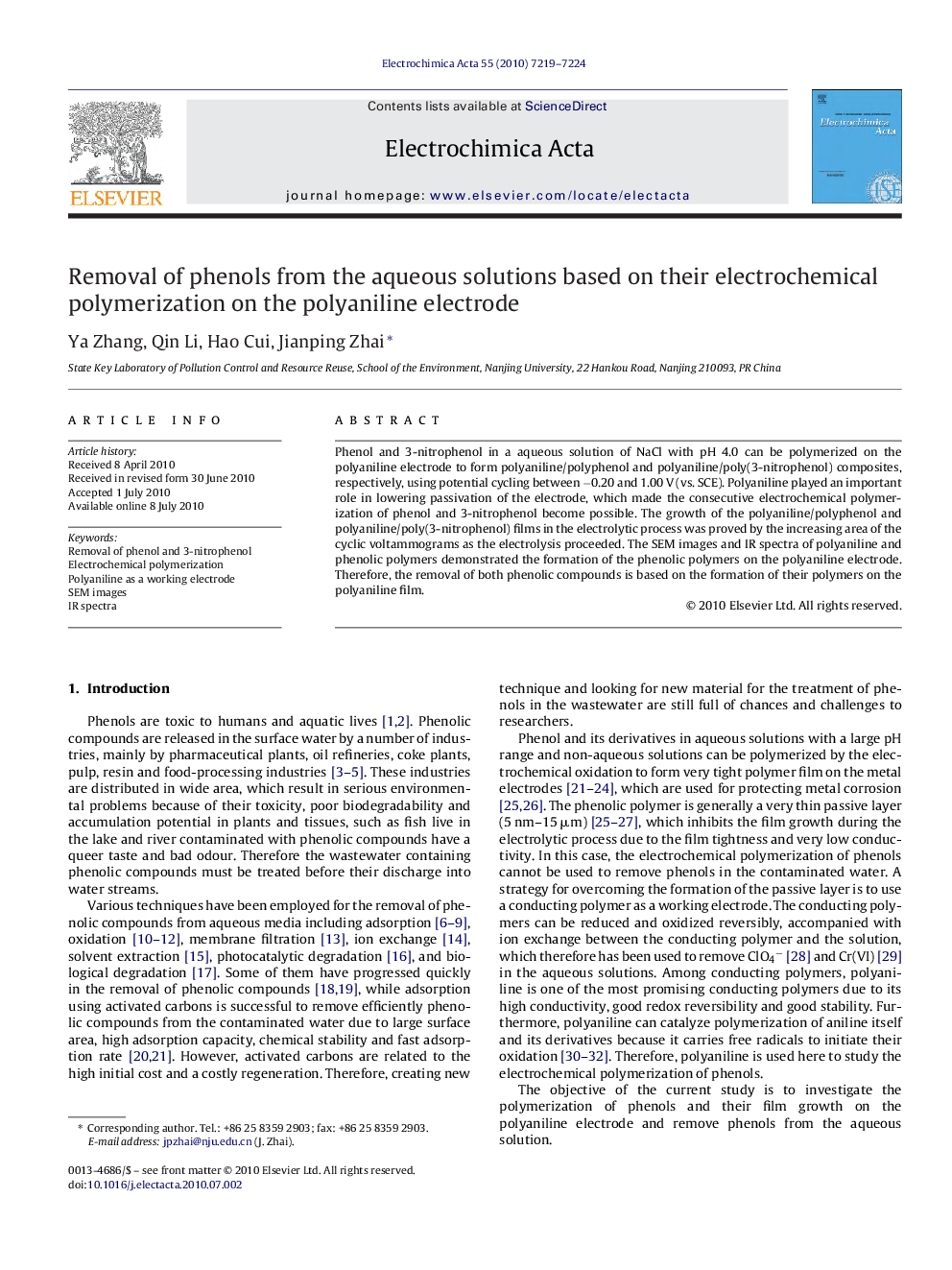| Article ID | Journal | Published Year | Pages | File Type |
|---|---|---|---|---|
| 190918 | Electrochimica Acta | 2010 | 6 Pages |
Phenol and 3-nitrophenol in a aqueous solution of NaCl with pH 4.0 can be polymerized on the polyaniline electrode to form polyaniline/polyphenol and polyaniline/poly(3-nitrophenol) composites, respectively, using potential cycling between −0.20 and 1.00 V (vs. SCE). Polyaniline played an important role in lowering passivation of the electrode, which made the consecutive electrochemical polymerization of phenol and 3-nitrophenol become possible. The growth of the polyaniline/polyphenol and polyaniline/poly(3-nitrophenol) films in the electrolytic process was proved by the increasing area of the cyclic voltammograms as the electrolysis proceeded. The SEM images and IR spectra of polyaniline and phenolic polymers demonstrated the formation of the phenolic polymers on the polyaniline electrode. Therefore, the removal of both phenolic compounds is based on the formation of their polymers on the polyaniline film.
